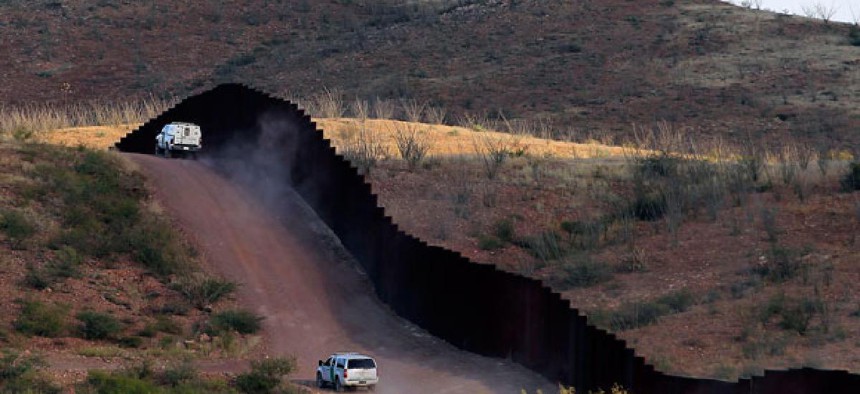
Ross D. Franklin/AP
Why the Immigration Plan Really Could Give Us Border Security
Plan requires that a set of border-security goals be met before any undocumented immigrant gets legal status.
The bipartisan immigration reform proposed by the "Gang of Eight" promises to bring the 11 million illegal immigrants out of the shadows. But first, there’s the little issue of securing the border.
The plan requires that a set of border-security goals be met before any undocumented immigrant gets legal status. And it sets a high bar: achieve a border-security effectiveness rate—measured by how many individuals are apprehended or sent back—of 90 percent in high-risk areas. It’s an ambitious goal, but achievable no less.
“What I read here ... is eminently doable, and it doesn’t read to me like there’s anything in here that is going to get in the way of going forward with a [legal] registration program,” said Doris Meissner, a senior fellow at the nonpartisan Migration Policy Institute and the director of its U.S. Immigration Policy Program.
That the new goals seem so achievable is thanks in large part to a recent trend: Deportations are up , and many of the border-security goals in the 2007 reform bill have already been achieved , even though that measure never became law. An accelerating Mexican economy and the subdued U.S. economy have made illegal crossings less appealing, too.
“The push factor is less; the pull factor is less,” said Andrew Selee, vice president for programs and senior adviser to the Mexico Institute at the Woodrow Wilson Center, a nonpartisan think tank. Given the use of new technology—the Gang of Eight's plan also calls for surveillance systems and drones to police the border—the border is going to get harder and harder to cross anyway, Selee said.
The plan dedicates $3 billion to the effort, a sum that Selee and Meissner both say seems sufficient to achieve the goal of a 90 percent security effectiveness rate in so-called high-risk border sectors. The plan defines high-risk sectors as those "where apprehensions are above 30,000 individuals per year."
A December report from the Government Accountability Office suggests that achieving that goal may not be too far off. Of the Border Patrol’s nine southwest-border sectors, five had more than 30,000 apprehensions in fiscal 2011, according to the report. And of those five, two had already achieved an above 90 percent effectiveness rate, which the Gang of Eight plan defines as the number of “apprehensions and turn backs in a specific sector divided by the total number of illegal entries.”
The Tucson, Ariz., border sector, which accounted for more than one-third of all apprehensions in fiscal 2011, had an effectiveness rate of 87 percent. Of the five sectors with more than 30,000 apprehensions that year, Laredo and the Rio Grande Valley had the lowest rates, at 84 percent and 71 percent, respectively.
The border is far from impervious to illegal entry, and a strengthened U.S. economy will surely tempt more would-be Americans to cross the border illegally. But the new goals may be achievable thanks to recent trends.







